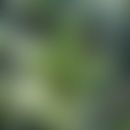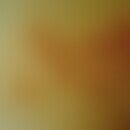Synonym(s)
DefinitionThis section has been translated automatically.
Whole or cut leaves of Hedera helix the ivy, harvested and dried in spring.
The quality is specified in the European Pharmacopoeia (Ph. Eur.).
HMPC monograph: well-established use as dry extracts, liquid extracts and thick extracts: expectorant for productive coughs
Clinically proven indications with marketing authorization: Relief of symptoms in chronic inflammatory bronchial diseases; colds of the respiratory tract.
ESCOP monographs: Cough, especially with excessive secretion of viscous mucus; supportive in inflammatory bronchial diseases.
BfArM (authorization): For the improvement of symptoms of chronic inflammatory bronchial diseases, acute inflammation of the respiratory tract with cough.
Commission E-Monograph: Catarrh of the airways; symptomatic treatment of chronic inflammatory bronchial diseases.
Empirical medicine: irritable cough, spasmodic cough, adjuvant for pertussis, gout, rheumatism, scrofula, external: decoctions for parasite infestations such as lice, scabies or pyoderma. Also for ulcers and burns.
In the cosmetics industry: Hedera helix extract (INCI)
IngredientsThis section has been translated automatically.
Ivy leaves contain 5% triterpene saponine glycosides like hederacoside C (according to Ph.Eur. at least 3% based on the dried drug). By hydrolytic cleavage the saponine glycosides are transformed into the aglycone hederagenin as well as the toxic (haemolytic) alpha-hederin and beta-hederin. In addition, the drug also contains chlorogenic acid, caffeic acid, scopolin, rutoside and polyins such as falcarinol (a medium strength contact allergen).
You might also be interested in
EffectsThis section has been translated automatically.
Ivy leaf extracts have expectorant, secretolytic and mucolytic effects. Their efficacy is determined by alpha-hederine, which has anti-edematous, spasmolytic and vasodilating effects. Due to their antibacterial and fungicidal properties, ivy extracts are also found in medicinal ointments, shampoos and tinctures as well as in natural cosmetics. Used in folk medicine for whooping cough, bronchitis and eczema. Frequently used Rubefaciens (skin irritating effect).
Field of application/useThis section has been translated automatically.
Respiratory catarrh, chronic inflammatory respiratory diseases (Commission E, ESCOP). For this indication, numerous positive study results are also available in placebo-controlled, double-blind clinical studies in children and adults.
DosageThis section has been translated automatically.
Depending on the package leaflet of the finished products.
Undesirable effectsThis section has been translated automatically.
Urticaria, nausea, vomiting, diarrhea, headache. Irritation of mucous membranes by the juice of fresh ivy leaves.
ContraindicationThis section has been translated automatically.
Allergies to family members of the Araliaceae; see also Rhus dermatitis, see also ivy dermatitis.
No recommendation for use during pregnancy and lactation, as safety studies are not yet available.
Children under 2 years! Exacerbation of respiratory symptoms.
Children between 2 and 4 years only under medical supervision.
Respiratory distress, fever or purulent sputum only under medical supervision.
Caution with gastritis!
Recipe(s)This section has been translated automatically.
The combination thyme herb + ivy leaves consists of
- Thyme herba (thyme herb)
- Hederae folium (ivy leaves)
and acts expectorant, antiseptic, antibacterial and is used in case of bronchitis or catarrh of the upper respiratory tract.
Trade namesThis section has been translated automatically.
Prospan® Liq (20-20-20 drops/day)
Bronchipret® drops contain a thyme/ivy combination
Ivy Special Extract EA 575®; Esberi® Ivy Cough Syrup,
LiteratureThis section has been translated automatically.
- Cwientzek U et al.(2011) Acute bronchitis therapy with ivy leaves extracts in a two-arm study. A double-blind, randomized study vs. an other ivy leaves extract. Phytomedicine 18:1105-1109.
- Fazio S et al.(2009) Tolerance, safety and efficacy of Hedera helix extract in inflammatory bronchial diseases under clinical practice conditions: a prospective, open, multicentre postmarketing study in 9657 patients. Phytomedicine 16:17-24.
- Greunke C et al.(2015) A systematic study on the influence of the main ingredients of an ivy leaves dry extract on the β2-adrenergic responsiveness of human airway smooth muscle cells. Pulm Pharmacol Ther 31:92-98.
- Hecker, M et al. (2002) Treatment of chronic bronchitis with a special extract of ivy leaves - multicenter observational study with 1350 patients. Forsch. Complementary Med. Class. Naturheilkd 9: 77-84.
- Jones JM et al.(2009) Allergic contact dermatitis to English ivy (Hedera helix)--a case series. Contact Dermatitis 60:179-180.
- Lang C et al.(2015) A Valuable Option for the Treatment of Respiratory Diseases: Review on the Clinical Evidence of the Ivy Leaves Dry Extract EA 575®. Planta Med 81:968-974.
- Mansfeld, HJ et al. (1998) Therapy of bronchial asthma with dry extract of ivy leaves. Münch. Med. Wschr 140 26-30.
- Mendel M et al. (2011) The effect of the whole extract of common ivy (Hedera helix) leaves and selected active substances on the motor activity of rat isolated stomach strips. https://www.J Ethnopharmacol 134:796 802.
- Schulte-Michels J et al,(2016) Ivy leaves dry extract EA 575® decreases LPS-induced IL-6 release from murine macrophages. Pharmacy 71:158-161.
- Zeil S et al. (2014) Tolerance and effect of an add-on treatment with a cough medicine containing ivy leaves dry extract on lung function in children with bronchial asthma. Phytomedicine 21:1216-1220.
- https://arzneipflanzenlexikon.info/efeu.php
- https://www.ema.europa.eu/en/documents/herbal-monograph/final-european-union-herbal-monograph-hedera-helix-l-folium-revision-2_en.pdf
Blaschek W (2015) Wichtl-Teedrogens and phytopharmaceuticals. A handbook for practice. Wissenschaftliche Verlagsgesellschaft Munich. S 317-319
- Wenigmann M. (2017) Phytotherapy medicinal drugs, phytopharmaceuticals, application. Urban & Fischer, p. 97-98




